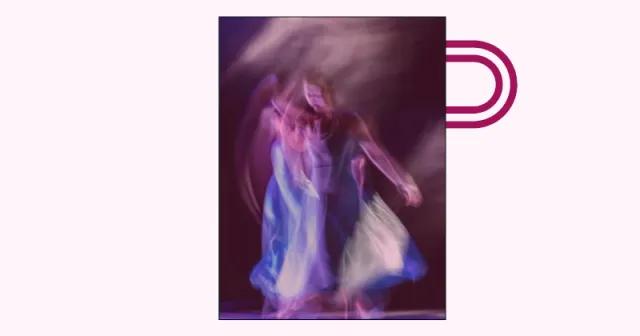The “Talking Walls” method for language acquisition
Blog by Ērika Pičukāne*.
The idea of “Talking Walls” is not new. It is used in many countries (e.g. Israel, America, Spain, etc.) to teach both native and second language. “Talking Wall” elements have also been used in Latvian pre-school educational institutions for quite a long time. Many years ago, teachers used the walls of the preschool group to display materials – the alphabet, a nature calendar with weather observations, numbers, a calendar of children's birthdays, pictures relevant to the learning topic, etc. The “Talking Wall” is a good tool not only for acquiring the language, but also for learning more about the topic. They can be used at any stage of education to make the transition to the learning process, where all subjects are taught only in the Latvian language, more successful.
Thematically, they can vary, for example, according to the subject-specific topic of 1st, 4th or 7th grade.
“Talking Walls” help to stimulate pupils interest in the subject by making it easier for them to memorise the required information, discuss it and narrate (the walls have support material). Teachers shall ensure that the “Talking Walls” enhance students' interest in a particular topic and the ability to express their ideas.
Language
“Word Wall”, “Grammar Wall”, etc.
Walls dedicated to the study of words and their components. The content of walls depends on children’s age.
In primary school, a child might be asked to put something in alphabetical order, connect something, etc. In later stages of education – according to the conditions of the task (e.g. diphthongs, vowels), grammar, etc.
Learning content such as vocabulary, grammar and pictures can also be placed on the wall, which can help learners acquire new language skills.
“Wall of internationally used terms”
According to the topic, words that can be understood in several languages are offered.
Many names for science subjects are created according to internationally accepted principles. These names are called internationalisms – they are used in the same or similar spelling and pronunciation in different languages.
For example:
Chemical sciences
Fluorine, chlorine, bromine, iodine, helium, neon, krypton, radon, xenon, etc.
Physics
Frequency, convection, Archimedes' law, etc.
If you are going to create the term cards yourself, I recommend using the Latvian Language Agency's Glossary of Terms (available at: http://www.sazinastilts.lv/language-learning/vocabulary/)
Geography
The “Talking Wall” as a trip around the world.
Biological sciences
“Talking Walls”, illustrating concepts related to biology. You can create material that will help to acquire a specific topic, e.g. the human respiratory system.
The “Talking Wall” can be designed according to the specific topic of the particular subject. For example, pictorial terms, diagrams, photographs and other subject-specific concepts/topics, etc.
For example: 10 concepts and 10 pictures (the pictures can be changed), with arrows or strips to connect the concept with the picture.
In addition, the “Talking Wall” could have a virtual tutor function, allowing students to receive feedback and guidance while studying a subject in Latvian.
“Other Walls”
While working at school, I have used the “Diphthongs Wall”, “Short and Long Vowel Wall”, “Latvian Lakes, Rivers Wall”, “Fairy Tale Wall”, etc. This helped my students to acquire and use the language more easily.
When working with adult audiences, I used “Themed Walls”. I used picture cards for language teaching “Let's start speaking Latvian!ˮ, which corresponded thematically to the topics of the language teaching tool “Laipa A1ˮ (available at: https://maciunmacies.valoda.lv/wp-content/uploads/2019/10/INT-LVA-VISS.pdf).
* Ērika Pičukāne is a methodologist in the Latvian Language Agency. In her everyday work, she teaches Latvian foreign nationals and cooperates with educators who teach languages in schools, she is responsible for re-emigration families’ camps and teachers’ language workshops, has also taught Latvian to third-country nationals, refugees, and asylum seekers, and managed various languages and integration projects of the Asylum Seekers Integration Fund. Her work and scientific interests include integration issues, tolerance, the continuous training of teachers, intercultural education, bilingual education, and inclusive education. Since 2014, she has a doctoral degree at the University of Latvia in pedagogy, specialising in the area of adult pedagogy.
Comments
Interaktīvas mācības
“Runājošās” sienas ir patiešām iedvesmojošas, jo tās var veicināt skolēna aizrautību STEM jomas zinātnēs un citās tēmās, kur nepieciešams vieglāk izskaidrot grūtas lietas.





"Runājošo sienu" metode ir patiesi vērtīga
"Runājošo sienu" metode ir patiesi vērtīga, un arī es savā pedagoģiskajā darbībā, mācot sociālās zinības un vēsturi 4. klasē, izmantoju šo pieeju. Tā ļauj strukturēti un vizuāli uztverami pasniegt mācību saturu, palīdzot skolēniem iegaumēt būtisko. Piemēram, tēmu par Latvijas novadiem papildinu ar sienu, kurā ietverta karte, fotogrāfijas, faktu kartītes un savienošanas uzdevumi. Tāpat valsts svētku tematikai izmantoju "Runājošo sienu" ar svarīgākajiem notikumiem, datumiem un simboliem.
Svarīgi uzsvērt, ka šo metodi pilnvērtīgi var īstenot tikai tad, ja skolotājam ir savs kabinets, kur materiāli paliek ilgstoši pieejami. Šādi sienas kļūst par pastāvīgu resursu, veicinot skolēnu interesi un diskusijas. Mana pieredze rāda, ka tās īpaši palīdz skolēniem ar dažādiem mācīšanās stiliem – vizuāliem, kinestētiskiem un verbāliem. Secinu, ka "Runājošās sienas" ir efektīvs veids, kā padarīt mācību procesu interaktīvāku un aizraujošāku.